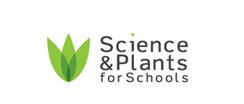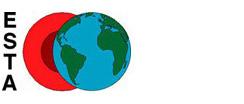Around the World
This list supports the teaching of science through the topic of Around the World with a focus on the Seven Natural Wonders of the World: Aurora Borealis, Grand Canyon, Paricutin Volcano, Victoria Falls, Great Barrier Reef, Mount Everest and the Harbour of Rio de Janeiro. Providing ideas and resources for linking aspects Around The World to science topics such as: plants, water cycle, classification, habitats, food chains, adaptation and rocks.
Visit the primary resources for cross curricular topics webpage to access all resource lists:
https://www.stem.org.uk/cross-curricular-topics-resources
Web of Wildlife (Age 7 to 11)
Food chains
This resource is a presentation which uses high quality images to introduce the structure of simple food chains, food webs and how different organisms within ecosystems depend on each other for food. Children carry out activities in small groups to identify sort and construct food chains for five different habitats. These are British woodland, British coastal waters and the less familiar habitats of African savannah, Arctic tundra and Antarctic
Dinner at the Reef: Food Chains (Age 7 to 11)
Food chains
Children can often recall and understand simple land based food chains but often struggle to realise the differences in fresh/ salt water food chains or in warm /cold sea and ocean food chains. This resource explores the differences between a land based food chain starting with a green plant and a sea or ocean based food chain starting with seaweed etc using reefs as an example.
ARKive's Adaptation: Design a Species Activity
Adaptation.
This activity is designed to teach pupils about the concept of adaptation, using the marine environment as an example of how different species are adapted to survive in a particular type of habitat. Pupils can then design their own species adapted to a particular sea or ocean habitat.This could be linked into the adaptation around the Harbour of Rio de Janeiro.
Grouping and Classification *suitable for home teaching*
Classification
This resource links to the topics of plants and living things and their habitats. The activities start by helping the children to differentiate between living and non-living things and make careful and accurate observations. Activities then look at how to sort and group items and apply these skills to make and use keys.
BBC Science Clips
Northern Lights
Increasingly more and more people are becoming aware of Aurora Borealis, also known as the Northern Lights. This resource shows images of a variety of light sources, both natural and manmade and will help children see that light comes from a source not from their eyes. Examples of reflective light, e.g. the Moon, traffic signs are also included, so children can see that some things may appear to give out light when in fact they are reflecting it. This could be a good way of making a distinction between sources of light and an object which reflects light as children often form misconceptions around this area. This video resource is a good starting point before studying and discussing The Northern Lights and deciding if they are a light source or not.
Further images and explanations about the creation of these Northern Lights can be found in this resource. http://www.kidsastronomy.com/Aurora_article.php
Working with Rocks
Rocks
There are a number of examples from the Seven Natural Wonders of the World which will create opportunities to study rocks , their formation and ways to test their properties .e.g. Grand Canyon – sedimentary rocks , Paricutin Volcano- igneous rocks.This resource contains practical activity ideas and background knowledge for teachers on rocks.
The following resource is also excellent background knowledge for the teacher.
Earth https://www.stem.org.uk/elibrary/resource/27821
(All page numbers refer to the pdf document.)The following activities might be suitable:
Compare rock samples by looking at colour, weight, hardness and other physical properties, then carry out tests to see if they are magnetic, permeable, hard or easily split - Pages 42-49. Children could decide how to collect, record and present data in this investigation. Pages 66 and 67 discuss metamorphic, igneous and sedimentary rocks and include an activity on making sedimentary rock. You could also observe rocks in use in churches and your own school and link in to exploration of how they may have changed over time- pages 38-41
Learn how to take an impression or a wax rubbing of a fossil on pages 74-75.



